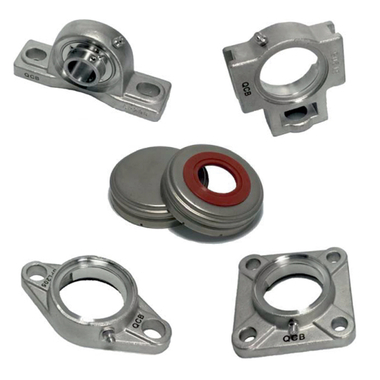Plummer blocks, also known as pillow blocks, are an essential component in many industrial applications, used to provide load support and reduce friction in rotating shafts. Proper maintenance is key to ensuring plummer blocks have a long service life. Here are some tips from the bearing experts at Bearing Revolution to help extend the lifespan of your plummer blocks:
Regular Lubrication
One of the most important maintenance tasks is lubricating the plummer block bearings. Grease helps reduce friction and enables the bearing to turn smoothly. Lack of lubrication can lead to overheating, accelerated wear, and premature failure. Re-lubricate bearings at recommended intervals per the manufacturer. Use a high-quality grease suited for the application. Apply the proper amount of grease and avoid over- or under-lubricating.
Inspect for Wear
Periodically inspect plummer blocks for signs of wear on the bearing housing, seals and lock nuts. Look for scoring, discolouration or looseness that could indicate issues. Replace any damaged or compromised components immediately to avoid further deterioration.
Check Alignment
Misalignment stresses the bearing and causes uneven wear. Check shaft and coupling alignment on a routine basis. Use a dial indicator to compare shaft position at both plummer block locations. Realign components if the shaft is out of tolerance. Check after any disassembly or disturbance to the system.
Monitor Vibration
Excess vibration accelerates wear on plummer block components. Establish a baseline vibration level when the system is newly installed. Periodically monitor vibration using accelerometers to detect any increases that could signify bearing wear or imbalance. Investigate the root cause of higher vibrations and remediate.
Consider Relubrication Systems
For plummer blocks in continuous high-speed or extreme load applications, automatic relubrication systems deliver a regular supply of fresh grease. This maintains optimal lubrication and prevents contaminant ingress. Continuous lubrication improves bearing life. Consider retrofitting existing plummer blocks or specifying relub systems for new installs.
Clean Away Contaminants
Dust, dirt, moisture and other contaminants in the bearing housing attack grease and cause wear. Establish procedures to keep the area around plummer blocks free of contaminants. Wipe down exteriors before relubrication. Avoid lubrication contamination. Use desiccant air dryers and breathers.
Replace Seals
Seals contain grease and protect internal bearing components. Inspect seals during maintenance checks and replace if cracked, torn, hardened or otherwise deteriorated. Use manufacturer recommended replacement seals. Take care during installation to avoid damage.
Follow Mounting Specs
Plummer blocks must be mounted properly to the base and equipment for optimal operation. Refer to manufacturer specs for mounting instructions, hardware and tightening torques. Check for looseness during inspections. Machine new mounting holes if ovaling occurs.
Use OEM Parts
Replacement components for plummer blocks, including bearings, seals, lock collars and accessories should come from the original manufacturer whenever possible. OEM parts are designed to OEM specs for proper fit, form and function.
Perform Proper Installation
Correct installation of plummer blocks is imperative for maximum service life. Ensure shafts are precision aligned. Tighten all fasteners to torque specifications. Mount units square to the housing surface. Load should be perpendicular to the inner ring raceway. Follow all manufacturer directions.
By following these maintenance tips for plummer blocks provided by the experts at Bearing Revolution, you can optimise the performance and longevity of this key rotating machine component. Proper lubrication, inspection, alignment, cleanliness and component care will extend plummer block lifespan for years of trouble-free operation.




